Madam and I are staying in South Lake Tahoe this week, so today I took advantage of this rare opportunity to do some fall insect collecting in western North America. In many insect groups, most species have finished their business for the season by the time autumn arrives. This is especially true for my beloved longhorned beetles, whose spring/early summer flush is now but a distant memory. There are a few genera of longhorned beetles, however, that wait precisely until autumn before making their appearance—Megacyllene and Tragidion being the best-known examples in eastern North America, and Crossidius being the best known out west. I adore autumn collecting, both in the east and in the west—its cooler temperatures and lower humidity make conditions incredibly pleasant, and the longer shadows cast by a low-hanging sun make the landscape—gently morphing from monotonous tones of greens to dazzling shades of amber, tawny, and gold—even more stunning.

I figured my best shot for Crossidius was in the sagebrush habitat below the eastern slope of the Sierra Nevada, so I took the Kingsbury Grade over Dagget Pass and found some good looking habitat near Genoa with nice stands of Ericameria nauseosa (rubber rabbitbrush)—host of Crossidius coralinus—in peak bloom. It took quite a bit of work to find the beetles, and for the first half-hour the only insects I saw were non-native honey bees (eventually I did see a few native bees as well, which I collected for Mike Arduser). I also checked some Asclepias speciosa (showy milkweed) that I found hoping to find Tetraopes femoratus (red-femured milkweed borer) but saw only Polistes dominula (European paper wasp).
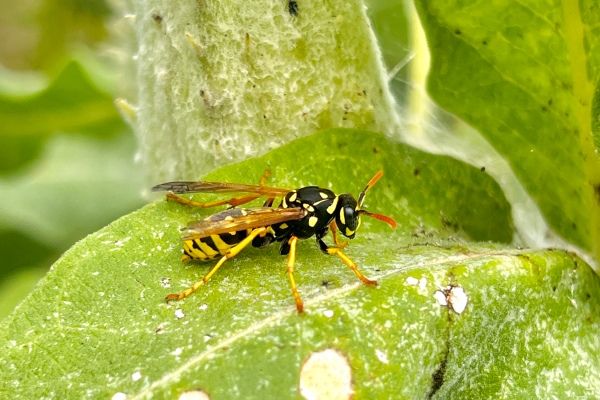
After quite a bit of seeching, I finally found a Crossidius adult, although it was not C. coralinus but rather the all-black C. ater.
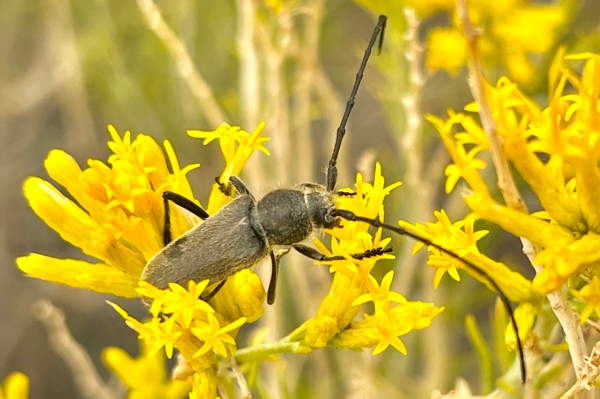
Very quickly afterwards, however, I found the first C. coralinus, and over the next half-hour I collected about a dozen males and females of C. coralinus and one more C. ater.
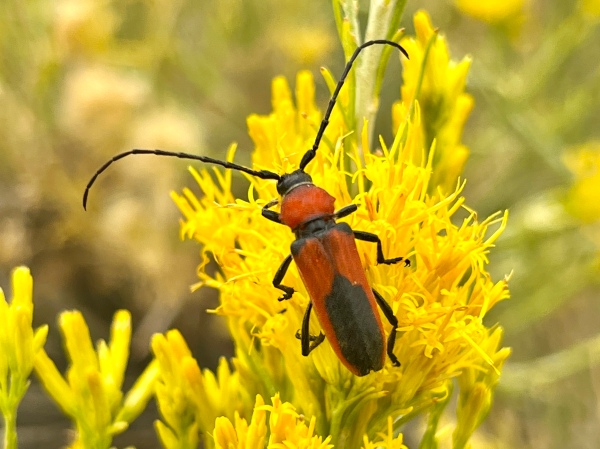
Crossidius coralinus has been divided into several subspecies based on differences in markings and coloration across its geographical range—in this area, the species is assignable to subspecies C. coralinus temprans. I did a final check of the stands near where I parked and found one more adult C. coralinus, after which I decided I’d seen enough and went to another spot to look for different species of Crossidius.
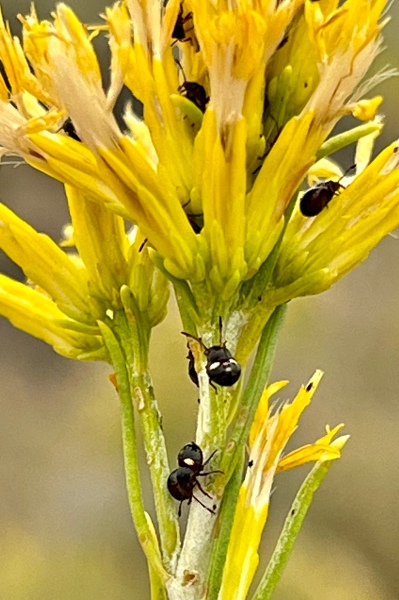
After having such good luck with C. coralinus on E. nauseosa, I went a few miles further north to Jack’s Valley Habitat Management Area where I saw a different species of rabbitbrush (Chrysothamnus viscidiflorus, or yellow rabbitbrush) in bloom.
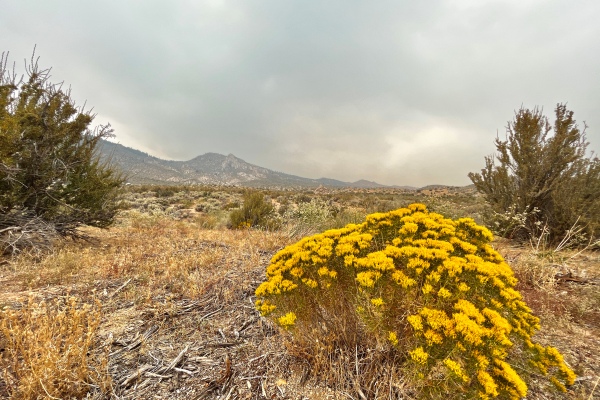
Yellow rabbitbrush is the host of a different species of Crossidius in this area—C. hirtipes, and I hoped I might be able to find this species as well. It didn’t take long, as I found a small female hiding in the inflorescence of one of the first rabbitbrush plants that I looked at. As sometimes happens, however, my early success was followed by an extended time without seeing another beetle.
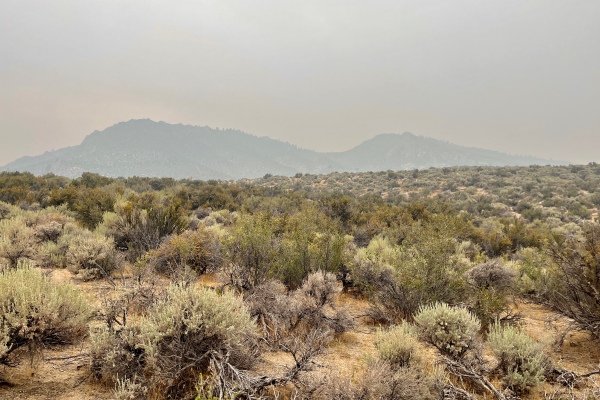
The plants were sparse in the sagebrush habitat, and I zigzagged my way from plant to plant going west from the trailhead. Despite the lack of beetles, there were other insects active on the flowers, including assassin bugs and digger wasps.

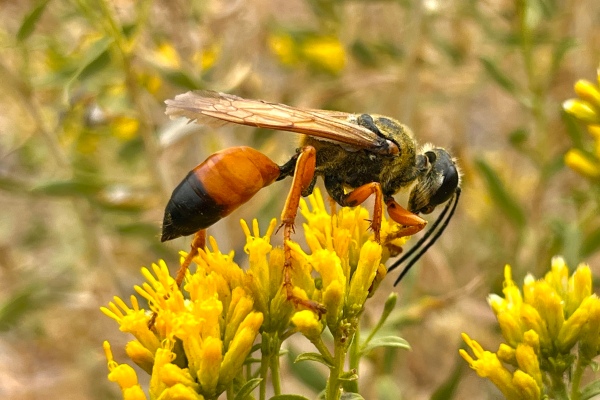
Eventually, I came upon an area where the plants were more abundant, and I started encountering beetles more regularly, including several big males perched atop the flowers and another C. ater adult hiding inside the flowers on one of these same plants.
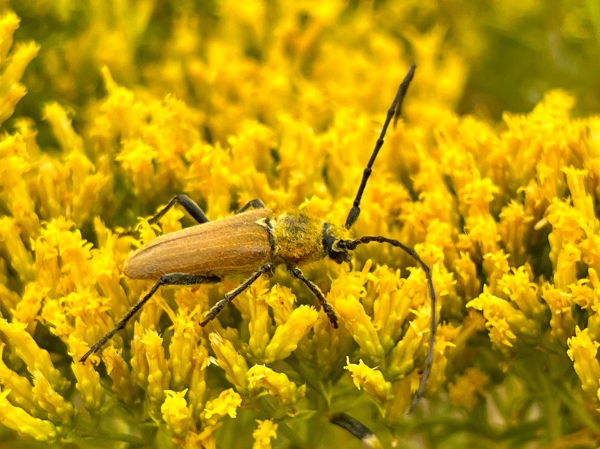
Bees—other than honey bees—were scarse, but I managed to pick up a few for Mike, and I also collected a few Eleodes sp. (desert stink beetles) that were, for some reason, crawling and perching on the rabbitbrush flowers. I’ve never thought of darkling beetles—at least those in the genus Eleodes—as anthophilous, and maybe this habit isn’t strict anthophily, per se, but it was remarkable to see so many of these beetles associated with the plants and hardly a single individual crawling about on the ground.
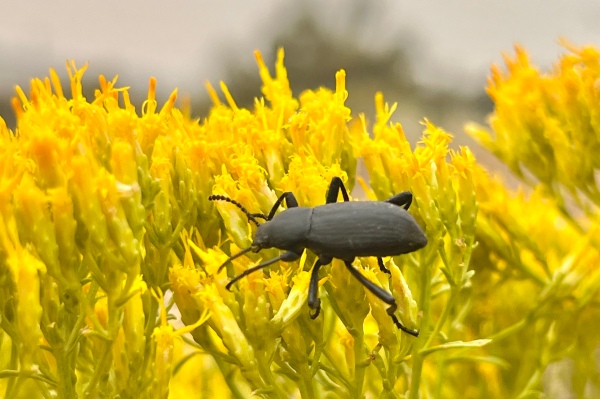
After a couple hours worth of effort, I’d secured about a dozen C. hirtipes, which, like C. coralinus, has been assigned to several subspecies (populations in this area being assignable to subspecies C. hirtipes immaculatus)—enough for my purposes, and I left to head back up into the mountains.

I’d hoped to find one more spot up in the mountains, but the sinking sun and rising elevation conspired to make conditions much too cool for all but the most persistent insects. I did stop at a powerline cut, where recently-cut Jeffrey pine (Pinus jeffreyi) trunks, stumps, and branches provided a perfect attractor for wood-boring beetles. Sadly, none were seen, even on the undersides of the logs and branches. Thus, my rare chance for fall insect collecting in western North America came to a close.
©️ Ted C. MacRae 2022
Dick Penrose did some great unpublished work, demonstrating that C. coralinus and C. hirtipes, subspecies were just midpoints in an incredible cline running from Mexico to Canada. I collected with him (and sometimes Frank Hovore) all over eastern California north of Tahoe, western and north central Nevada, and adjacent Oregon and Idaho. If you use a beating sheet, you can also get Agrilus walsinghami in good numbers on the Chrysothamnus and Haplopappus, especially in eastern Lassen County, CA. The best time to collect out there is September and October.
Agree on all points. That said, I’ve become a bit less militant in my later years about strict application of subspecies concepts. For widespread poly topic species like these subspecies are convenient tags for referring to populations and, I think, actually encourage collecting of additional material from across their ranges that can help us better characterize the clinal patterns.
I was fortunate to encounter Dick and Frank in my early years and strike up correspondence with them that lasted up until their passings – they were both generous with their help and gracious in their manners.
I did keep an eye out for Agrilus walsinghami but didn’t see any. Unlike Crossidius, however, this species is not polytopic, so finding more to go with the many I already have wasn’t so important.
One thing I’d love to do some year is come out here for Omus! I presume September is the month. Got any good localities?
Hiyer!
Busy in the field in eastern Kansas. Bad scarabaeoid year here, with La Nina drought.
Subspecies concepts work really well for some groups, less so for others. Typical biology, with the critters ignoring our definitions and concepts whenever they feel like it.
My A. walsinghami from out by Pyramid Lake (Washoe County, Nevada) come in blue or purple, with the purple form being very rare.
Omus. I get most of the O. californicus complex from May through September, primarily on the west slope of the Sierra Nevada and Cascades or the west slope of the Coast Ranges; they seem to like rain shadows. Both O. c. intermedius and O. c. angustocylindricus I have only found through serendipity, generally along logging roads at night, or during the day under logs, or on cloudy days in shadow. Neither one ever came to bait for me. Conversely, the nominate form readily came to bait in good numbers in Humboldt County. I also published a paper with my son on exceptional tiger beetle feeding behaviours, where we reported O. c. californicus on the Mendocino headlands coming out of the bluffs to hunt in the tide pools at low tide (where they were also captured and eaten by Pachygrapsus crassipes crabs). The Omus were catching and eating various amphipods.
Happy days,
Christopher
Ted: tried to email you some Omus localities and the tiger beetle feeding paper, but the two email addresses I have for you no longer work.
Use the e-mail link in the menu at the top of the page to send a message to my private e-mail. You can’t attach anything through the link above, but you’ll be able to attach to my response.
Hey Ted, Welcome back to Tahoe, and sorry about the smoke! I see tons of C. ater around my neighborhood in Truckee; seems to be the most abundant species around here. I haven’t been to S. Lake in weeks, but if you want a quicker expedition closer to your base camp, there’s usually plenty of Ericameria in bloom along the Cove East trail (off the end of Venice Dr.) and the Lam Watah/Rabe Meadows trail off Kahle. Plenty of Melanophila consputa flying around right now.
Hi Will – I didn’t know you lived in Truckee or I would have reached out to you before I got here. I’ve seen Ericameria blooming throughout the basin and have looked at a lot but only seen bees. There are also no iNat records of Crossidius in the basin, so I assumed they don’t get up this high—is that not correct? I’d love to find some Melanophila consputa—are they on freshly cut pines? I’ve looked at some but not seen anything on them. Someday I’d love to come to California and look for all the different Omus spp. Got any localities?
No worries! I see C. ater around my neighborhood in Truckee in August, and while we’re at a lower elevation than the Tahoe basin, we’re only about 150 feet below lake level. I can’t say I’ve knowingly seen any within the actual basin, but it wouldn’t surprise me. As for the other two species, I don’t know them, so this post motivated me to check on some rabbitbrush along the Boca-Stampede road, my neighborhood road bike ride, and a decent place to see slightly more “:Great Basiny” stuff that’s crept up the hill a little bit. I didn’t see any Crossidius at all, which was a bit surprising given how much rabbitbrush was still going strong, but I did see a couple of Mormon Metalmarks and a Gray Hairstreak (species I seldom see in this area), and two Monarchs, which, sadly, has become exceedingly rare in these parts. They seem to be having a strong rebound this year though, as I’ve seen several others lately; I hadn’t seen any in the past 3-4 years locally. Anyhow, thanks for the inspiration!
Regarding Melanophila, I found about 20 inside an empty retail space in Olympic Village the morning after we had a very smoky fundraiser the night before. I suspect they came in to the lights, but might it be possible that they emerged from very old wood trim used for the windows and the bar? There was even an old wagon in the place. Two were mating, one was cannibalizing another (presumably the dead one had been in there for longer?), and the rest were just trying to get out the windows.
Come back in early June and I can show you plenty of Omus around here. There are two taxa between the local Tahoe critters and Plumas County angustocylindricus (a quick drive north). C. plutonica are usually easy that time of year too, which seems to be high on folks’ wishlists. For the other Omus, I can get localities from Dennis Haines and Mike Kippenhan, and maybe I could join you for some of those other taxa further afield. Some time in May or even April might be better if you wanted to find all the taxa found at lower elevations.
You mention how often it happens that the first plant or spot you check has a species of interest, perhaps even 1 you have made a trip for —>
“… yellow rabbitbrush is the host of a different species of Crossidius—C. hirtipes, ….”
And then, maybe that is the only specimen you get?
How can that be?
It seems like there is some rare power working — though nobody believes that, right?
What are the chances, the explanations, the heuristics involved?
1] Did the beetle god want you to have that thrill, & then just frustrate you?
2] You just got lucky?
3] Some occult concatenation of forces or causes or urges led you straight to the spot?
4] You are just so percipient of the needs & habits of the target species that you unconsciously head for the right spot?
5] Maybe it’s a case of what Hamlet tells Laertes about stuff they are not smart enough to know — “There are more things in Heaven and Earth, Horatio, than are dreamt of in your philosophy.”
Me?
This happened to me enough times to make me think an actual phenomenon is working.
I like # 5].
Thanks for the trip!!!
I think I’ll have to go with #5 as well – there is so much we don’t know that we don’t even know we don’t know it. Extreme ignorance of the universe is always a credible explanation!